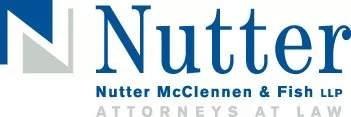Most patent owners are aware that under 35 U.S.C. § 154(d), publication of a United States patent application confers provisional rights to the patent owner. The provisional rights allow an owner to collect damages for infringement of issued claims dating back to the date of publication provided that the claims are substantially similar to the claims that are included in the published application. It can often be difficult for a patent owner to prove that issued claims are substantially similar to published claims. However, even if a patent owner is able to prove claim similarity from publication to issuance, a further obstacle to collect pre-issuance damages was solidified by the Federal Circuit recently in Rosebud LMS v. Adobe Systems—the statutory requirement of actual notice. In the recent Federal Circuit decision, the Court found that constructive notice was insufficient to meet the actual notice requirement under 35 U.S.C. § 154(d), and that instead a patent owner must prove the infringer was actually aware of the patent at issue.
Rosebud filed three suits against Adobe for patent infringement. The first two suits alleged infringement of U.S. Patent No. 7,454,760 (the '760 patent) and U.S. Patent No. 8,046,699 (the '699 patent), respectively. The first suit was dismissed in 2010 and the second suit was dismissed with prejudice a few weeks after the instant case was filed. The patent at issue in this suit, U.S. Patent No. 8,578,280 (the '280 patent), which is the grandchild of the '760 patent and the child of the '699 patent, teaches techniques for enabling collaborative work over a network of computers. Rosebud alleged that Adobe had actual knowledge of the published '280 patent application, and thus owed Rosebud a reasonable royalty as of the date of the published application. Adobe, in turn, moved for summary judgment, asserting that Rosebud was not entitled to pre-issuance damages because Adobe lacked actual notice of the published patent application that led to the '280 patent. Adobe averred that "actual notice" could only exist if the patentee provides the accused infringer direct notice of the infringement. Adobe further asserted that Rosebud was not entitled to post-issuance damages because Rosebud discontinued use of the accused technology ten months prior to the issuance of the '280 patent. The issues pertaining to post-issuance damages were not before the Court.
Patent owners are generally entitled to damages for infringement activities that occur during the patent term under 35 U.S.C. § 271. Additionally, 35 U.S.C. § 154(d) defines provisional rights, which provides the patentee:
(1) ...a right to obtain a reasonable royalty from any person who, during the period beginning on the date of publication of the application for such patent under section 122(b),...and ending on the date the patent is issued—
(A)(i) makes, uses, offers for sale, or sells in the United States the invention as claimed in the published patent application or imports such an invention into the United States; or
(ii) if the invention as claimed in the published patent application is a process, uses, offers for sale, or sells in the United States or imports into the United States products made by that process as claimed in the published patent application; and
(B) had actual notice of the published patent application and, in a case in which the right arising under this paragraph is based upon an international application designating the United States that is published in a language other than English, had a translation of the international application into the English language.
(2) RIGHT BASED ON SUBSTANTIALLY IDENTICAL INVENTIONS.— The right under paragraph (1) to obtain a reasonable royalty shall not be available under this subsection unless the invention as claimed in the patent is substantially identical to the invention as claimed in the published patent application.
The issue relevant to this appeal is the "actual notice" requirement. The Federal Circuit assessed the proper standard necessary to fulfill the requirements of "actual notice" and evaluated whether Adobe had actual notice of the published '280 patent. The Federal Circuit noted that the nature of the "actual notice" requirement was an issue of first impression for the Court.
In assessing the "actual notice" requirement, the Federal Circuit agreed with Adobe and affirmed the district court holding that constructive knowledge does not satisfy "actual notice." However, the Federal Circuit declined to go as far as Adobe's position that "actual notice" requires direct notice of infringement from the patentee. The Federal Circuit acknowledged that while an affirmative act to provide notice meets the "actual notice" standard, the ordinary meaning of "actual notice" is synonymous with "knowledge" and thus includes knowledge that is obtained even in the absence of an affirmative act. Accordingly, if an accused infringer performed a patent search and became aware of the published application in question, that would qualify as actual notice even though no notice was provided by the patentee.
The Federal Circuit's dicta acknowledged that policy reasons may exist for requiring an affirmative act of notification by the patentee. For example, a strict rule requiring notification better justifies the imposition of harsher penalties such as statutory pre-issuance damages and provides a hard-line standard that is easier to implement in the courts. However, the Federal Circuit declines to amend the statute to require an affirmative act, leaving such an amendment for consideration by Congress.
In ruling against Rosebud, the Court determined that actual knowledge of the parent and grandparent patents (by virtue of the earlier filed suits) was insufficient to provide notice with respect to the present patent. This is at least because a common specification does not mean that adequate notice has been provided with respect to the scope of the claims of the present patent.
The Rosebud decision illustrates the difficulty that patentees face in seeking pre-issuance damages as an additional remedy to patent infringement. While the nature of pre-issuance damages may justify the patentee having to meet the difficult standard of proving the accused infringer had knowledge of the published application, the knowledge requirement creates the perverse incentive for potential infringers to circumvent due diligence practices, thus turning a blind eye towards the possibility of infringement so as to avoid liability for pre-issuance damages. As this seems to be an easy tool in the toolbox of potential infringers for dodging liability following Rosebud, it will be important to keep an eye on future cases that present this issue to the courts and to monitor legislative developments to see if Congress will take action to amend the language of the statute to only require constructive notice as opposed to actual notice.
Originally published on February 22, 2016
This update is for information purposes only and should not be construed as legal advice on any specific facts or circumstances. Under the rules of the Supreme Judicial Court of Massachusetts, this material may be considered as advertising.


